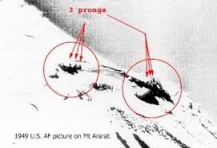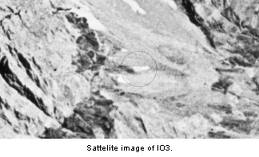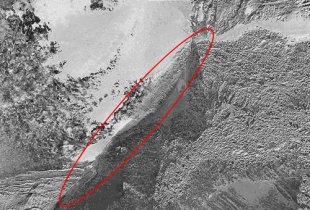First of all we need to step back from all the media hype, Indiana Jones type legends and most of all,
What do we really know to be true?
How do we even know this story of Noah’s Ark really did happen?
The greatest validation for any biblical event are the words of Jesus himself.
Luke 17:26-27 (NIV) “Just as it was in the days of Noah, so also will it be in the days of the Son of Man. 27 People were eating, drinking, marrying and being given in marriage up to the day Noah entered the ark. Then the flood came and destroyed them all.
Peter also refers to the Noah and the flood
2 Peter 2:5 (NASB) and did not spare the ancient world, but preserved Noah, a preacher of righteousness, with seven others, when He brought a flood upon the world of the ungodly;
1 Peter 3:20 (NLT) those who disobeyed God long ago when God waited patiently while Noah was building his boat. Only eight people were saved from drowning in that terrible flood.
Also the writer of Hebrews mentions Noah and the ark.
Hebrews 11:7 (NKJV) By faith Noah, being divinely warned of things not yet seen, moved with godly fear, prepared an ark for the saving of his household, by which he condemned the world and became heir of the righteousness which is according to faith.
OK then, where does the bible say the Ark landed?
Genesis 8:3-4 (NIV2011)
3 The water receded steadily from the earth. At the end of the hundred and fifty days the water had gone down, 4 and on the seventeenth day of the seventh month the ark came to rest on the mountains of Ararat.
Notice the scripture says “mountains of Ararat”. It does say that it rested on Mount Ararat
The “Mountains of Ararat” in Genesis clearly refer to a general region, not a specific mountain. Biblical Ararat corresponds to Assyrian Urartu (and Persian Arminya) the name of the kingdom which at the time controlled the Lake Van region.
Do we even know there even a place called Ararat?
3 times in the bible the land of Ararat is mentions as being an actual known place.
2 Kings 19:36-37 (ESV) Then Sennacherib king of Assyria departed and went home and lived at Nineveh. 37 And as he was worshiping in the house of Nisroch his god, Adrammelech and Sharezer, his sons, struck him down with the sword and escaped into the land of Ararat. And Esarhaddon his son reigned in his place.
Isaiah 37:38 (NLT) One day while he was worshiping in the temple of his god Nisroch, his sons 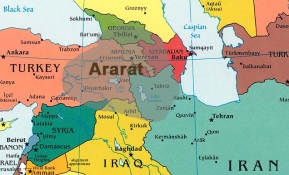 Adrammelech and Sharezer killed him with their swords. They then escaped to the land of Ararat, and another son, Esarhaddon, became the next king of Assyria.
Adrammelech and Sharezer killed him with their swords. They then escaped to the land of Ararat, and another son, Esarhaddon, became the next king of Assyria.
Jeremiah 51:27 (HCSB) Raise a signal flag in the land; blow a ram’s horn among the nations; set apart the nations against her. Summon kingdoms against her— Ararat, Minni, and Ashkenaz. Appoint a marshal against her; bring up horses like a swarm of locusts.
Wow, that’s a huge area. How do we know which mountain it landed on in the region of Ararat?
In the book, Antiquities of the Jews, Josephus wrote: the ark rested on the top of a certain mountain in Armenia … However, the Armenians call this place, αποβατηριον ‘The Place of Descent’; for the ark being saved in that place, its remains are shown there by the inhabitants to this day. Now all the writers of barbarian histories make mention of this flood, and of this ark; among whom is Berossus. For when he is describing the circumstances of the flood, he goes on thus: “It is said there is still some part of this ship in Armenia, at the mountain of the Cordyaeans; and that some people carry off pieces of the bitumen, which they take away, and use chiefly as amulets for the averting of mischiefs.” Hieronymus the Egyptian also, who wrote the Phoenician Antiquities, and Mnaseas, and a great many more, make mention of the same. Nay, Nicolaus of Damascus, in his ninety-sixth book, hath a particular relation about them; where he speaks thus: “There is a great mountain in Armenia, over Minyas, called Baris, upon which it is reported that many who fled at the time of the Deluge were saved; and that one who was carried in an ark came on shore upon the top of it; and that the remains of the timber were a great while preserved. This might be the man about whom Moses the legislator of the Jews wrote.” (I.3.5-6, trans. William Whiston) (1)
Sir Walter Raleigh devoted several lengthy chapters of his History of the World (written c. 1616) to his argument that the “Mountains of Ararat” were anciently understood as including not only those of Armenia, but all the taller mountain ranges extending into Asia far to the east, and that Noah’s Ark must have landed somewhere in the Orient, since Armenia is not actually east of Shinar. (1)
Genesis 11:2 (ESV) And as people migrated from the east, they found a plain in the land of Shinar and 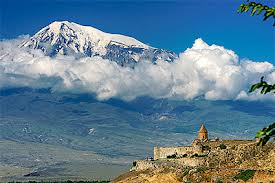 settled there.
settled there.
There is strong evidence to support the fact that the mountain traditionally know as Mount Ararat in Turkey could not possibly be where the Ark landed.
The International Standard Bible Encyclopedia agrees with the aforementioned hypothesis that the Ark of Noah would lie in a distinct mountainous region: “The Ark is said to have rested upon the mountains of Ararat, i.e., in the mountainous region of Armenia, the plural showing that the mountain peak known as Ararat was not referred to, this peak lies outside the general region.”
This also makes sense in light of Genesis 8:5 which states: “And the water decreased steadily until the tenth month. And on the first day of the month the tops of the mountains became visible.” (NKJV)
This verse indicates that other mountain peaks became visible subsequent to the ark of Noah landing on the mountains of Ararat. In the Elborz Mountains of Northwestern Iran, there are fifteen peaks over 14,000 feet. Conversely, Mount Ararat virtually stands alone in Eastern Turkey. The Elborz Mountains seem to line up better with this verse than Mount Ararat. (2)
Well, what about all the ark expeditions and sightings that we hear about and see on TV.?
 Yes there have been legends for centuries of people finding the Ark and bring down Ark wood. There have been expeditions, some by very reputable groups to the traditional Mount Ararat. Also there have been aerial photographs as well as satellite images of things that look unusual on this snow capped mountain. Still yet no hard evidence to support the existence of Noah’s ark has been produced.
Yes there have been legends for centuries of people finding the Ark and bring down Ark wood. There have been expeditions, some by very reputable groups to the traditional Mount Ararat. Also there have been aerial photographs as well as satellite images of things that look unusual on this snow capped mountain. Still yet no hard evidence to support the existence of Noah’s ark has been produced.
So we really have no idea which mountain the Ark landed or if the Ark could have survived this long..
Why wouldn’t God allow Christians to find the ark and show the world that the bible and God is true?
Think about it. People would be flocking to this mountain and soon it would turn into a tourist trap. Then people would begin to worship the mountain. The Ark itself would be reconditioned, complete with central air, a petting zoo for the kids and handicap approved restrooms. Merchants would begin selling fake ark paraphernalia. Tours would be sold to vacationers from all over the world. The Catholic church would build a huge cathedral at the base of the mountain and the Pope would come and bless the mountain. Universal  Studios would buy the movie rights to all Ark movies and photographs, Donald trump would subdivide the entire mountain and begin selling condos all around the slopes and some Christians would propose a Noah’s Ark Amusement Park and Hotel complex.
Studios would buy the movie rights to all Ark movies and photographs, Donald trump would subdivide the entire mountain and begin selling condos all around the slopes and some Christians would propose a Noah’s Ark Amusement Park and Hotel complex.
I think God has enough trouble with idolatry and materialism without turning Noah’s Ark into Wally World.
2 Corinthians 5:7 (NIV) For we live by faith, not by sight.
Maybe God’s just wants us to believe what he has told us.
John 20:29 (ESV) Jesus said to him, “Have you believed because you have seen me? Blessed are those who have not seen and yet have believed.”
(1) http://en.wikipedia.org/wiki/Mountains_of_Ararat
(2) The Ark of Noah In Iran? http://www.baseinstitute.org/index.php?option=com_content&view=article&id=51&Itemid=65
Cartoons Courtesy of Carl D’Agostino


